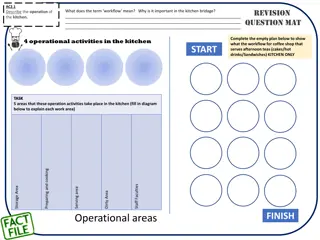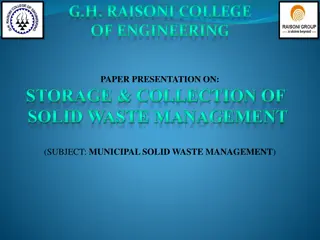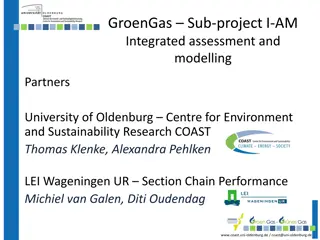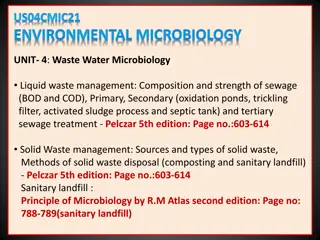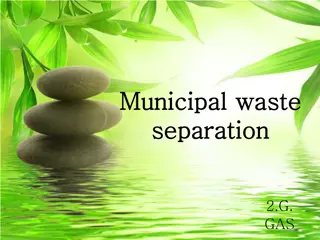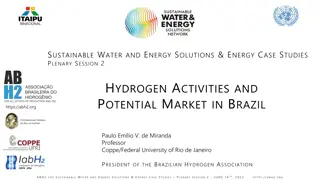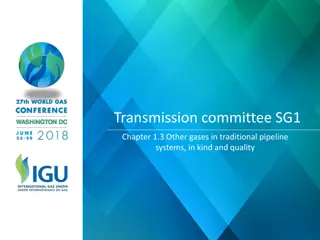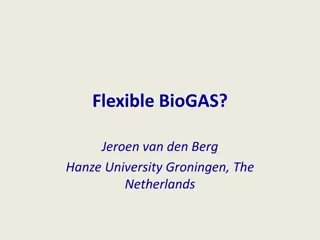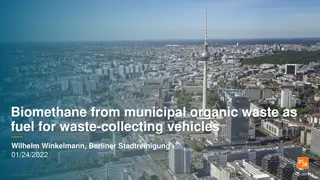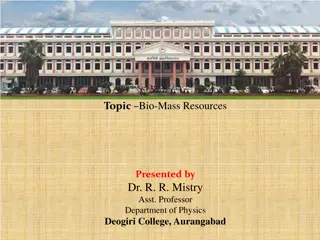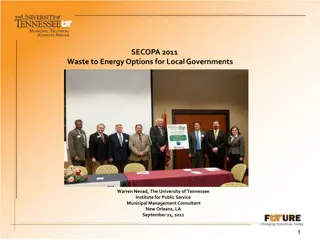Understanding Biogas Production from Kitchen Waste for Green Energy Solutions
Biogas, a methane-rich gas produced from organic waste, offers an eco-friendly energy solution through anaerobic digestion. Learn about its composition, advantages, and disadvantages, as well as the biochemical reactions involved in its production. Discover the various modes of operation and types of anaerobic digesters used in biogas production to promote sustainable living and reduce environmental impact. Visit www.biogasnasik.com for detailed information.
Download Presentation

Please find below an Image/Link to download the presentation.
The content on the website is provided AS IS for your information and personal use only. It may not be sold, licensed, or shared on other websites without obtaining consent from the author. Download presentation by click this link. If you encounter any issues during the download, it is possible that the publisher has removed the file from their server.
E N D
Presentation Transcript
GREEN ENERGY SOLUTIONS BIOGAS PRODUCTION FROM KITCHEN WASTE- GREEN STAR+ www.biogasnasik.com
Overview Biogas Composition Of Biogas Advantages And Disadvantages Biochemical Reaction And Stages Of Anaerobic Digestion Modes Of Operation Types Of Anaerobic Digesters Paper Presentation www.biogasnasik.com
What is biogas? Biogas Is A Methane Rich Flammable Gas That Results From The Decomposition Of Organic Waste Material Biogas Is Produced By Anaerobic Digestion Or Fermentation Of Biodegradable Materials Such As Biomass, Manure, Sewage, Municipal Waste, Green Waste, Plant Material And Energy Crops. Biogas Also Called As Marsh Gas Biogas Is A Type Of Biofuel. This Type Of Biogas Comprises Primarily Methane And Carbon Dioxide
Composition of biogas www.biogasnasik.com Biogas is generated by the activity of anaerobic bacteria Composition depends on: the composition of raw material, organic loading to digesters, time and temperature of anaerobic digestion Composition of biogas Substances Methane Carbon Dioxide Hydrogen Nitrogen Water vapour Hydrogen Sulphide Symbol CH4 CO2 H2 N2 H2O H2S Percentage 50 - 70 30 - 40 5 - 10 1 - 2 0.3 Traces
Advantages of biogas Production of large amount of methane gas (ambient temperature storage) Production of free flowing thick sludge Odorless sludge Sludge can be used as fertilizer and soil conditioner Sanitary way for human and animal waste disposal Conservation of scarce resources like wood Low Cost www.biogasnasik.com
Disadvantages Incorrect handling of liquid sludge causes pollution Requires control and maintenance Needs proper temperature condition Use as a fuel requires removal of CO2and H2S GREEN ENERGY SOLUTION INFO . LINE +91 98902 98212 www.biogasnasik.com
Batch-fed System The simplest design. Low cost. The feedstock is loaded one batch at time. Irregular biogas production. Can operate on high solid content. Requires manual labor. www.biogasnasik.com
Types of digesters A typical biogas system consists of the following components: (1) Manure collection (2) Anaerobic digester (3) Effluent storage (4) Gas handling (5) Gas use. TWO MAIN TYPES: 1. Digesters utilizing dispersed growth of bacteria 2. Digesters utilizing attached growth of bacteria www.biogasnasik.com
DISPERSED GROWTH DIGESTERS 1. Fixed dome digester 2. Floating gas holder digester (Indian) 3. Plug flow digester (horizontal displacement) 4. Bag digester (Taiwan and Korea) 5. Separate gas holder digester 6. Conventional digester www.biogasnasik.com
Fixed dome digester Drumless digester. Underground masonry (fermentation with a dome on the top for gas storage. brick compartment chamber) The fermentation chamber and gas holder are combined as one unit. Eliminates the use of costlier mild steel gas holder which is susceptible to corrosion. 20 to 50 years.
Floating gas holder digester Jashu Bhai J Patel developed a design of floating drum biogas plant Popularly known as Gobar Gas plant. In this design, the digester chamber is made of brick masonry in cement mortar. A mild steel drum is placed on top of the digester to collect the biogas produced from the digester. Thus, there are two separate structures for gas production and collection.
Bag Biodigester It consists of a long cylinder made of PVC or red mud plastic. The bag digester was developed to solve the problems experienced with brick and metal digesters.
Results The present study was done in the months of winter and summer and the sampling were done seasonally from the sewage treatment plant. Raw sewage consists of organic and inorganic solids in dissolved and suspended form with 90-99.9% of water
The digester was operated at different organic feeding rates of 0.5, 1.0, 2.3, 2.9, 3.5 and 4.3 kg of volatile solids (VS)/m3 of digester slurry per day. Biogas generation was enhanced by the addition of domestic sewage to MSW. The maximum biogas production of 0.36m3/kg of VS added per day occurred at the optimum organic feeding rate of 2.9 kg of VS/m3/day.









